How to Adapt Socialization Techniques for Different Cat Personalities
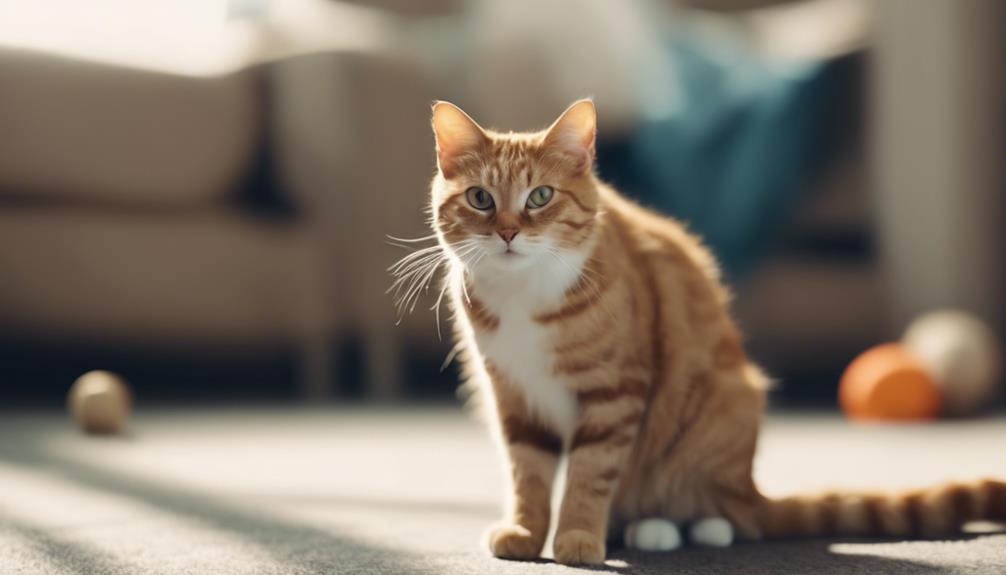
Adapting socialization techniques for different cat personalities is crucial to building a strong bond between cats and their owners. Each cat has its unique temperament, requiring tailored approaches to socialization. Understanding a cat's personality can help owners adjust their interactions to suit their feline companion's needs. By recognizing and respecting these individual differences, owners can create a more harmonious and fulfilling relationship with their cats.
Tailoring techniques to match individual cat temperaments can strengthen the bond between cat and owner. Adapting socialization techniques for different cat personalities is crucial to building a strong bond between cats and their owners. Each cat has its unique temperament, requiring tailored approaches to socialization. Understanding a cat's personality can help owners adjust their interactions to suit their feline companion's needs. By recognizing and respecting these individual differences, owners can create a more harmonious and fulfilling relationship with their cats.
Recognizing Cat Personalities
Recognizing the unique personalities of cats is essential for effectively adapting socialization techniques to meet their individual needs. Understanding feline behaviors is crucial in this process. Cats, like humans, have distinct temperaments and preferences. Some may be outgoing and sociable, while others are more reserved and shy. By observing their body language, vocalizations, and interactions with their environment, one can gain valuable insights into their personalities. Adapting socialization techniques based on these observations is key to building trust and forming positive relationships with feline companions.
For instance, a cat that displays playful behavior may benefit from interactive toys and engaging activities during socialization sessions. On the other hand, a cat that exhibits signs of fear or aggression might require a more gradual and gentle approach to build confidence and reduce stress. By tailoring socialization techniques to suit each cat's unique personality traits, caregivers can create a supportive and enriching environment that promotes their overall well-being.
Tailoring Socialization Approaches
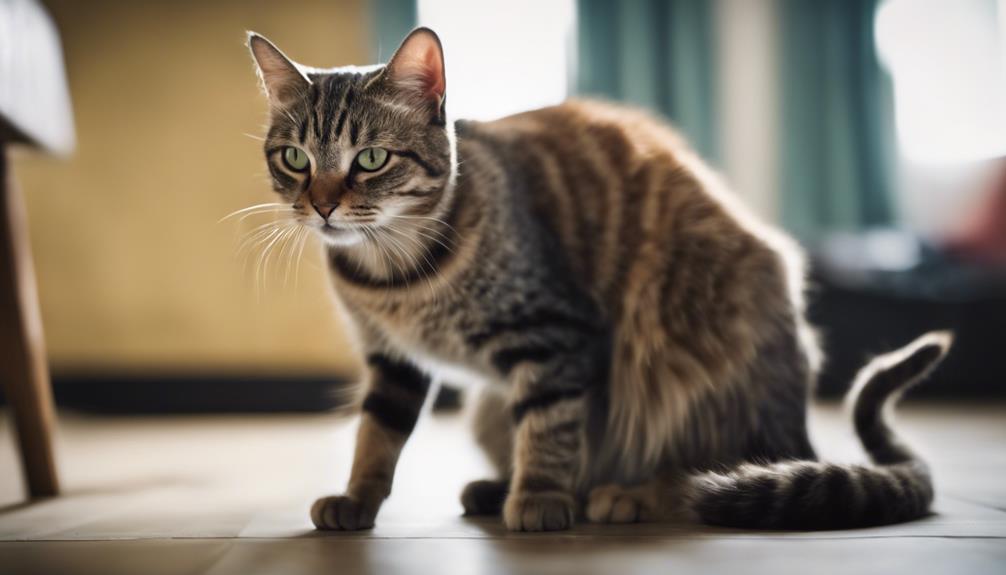
When socializing with cats, it's essential to tailor one's approach based on the individual cat's personality. By recognizing the unique traits and preferences of each cat, one can adjust their interactions to suit the cat's comfort level.
This personalized approach can help build trust and strengthen the bond between the cat and their human companion.
Personality-Based Socialization Strategies
Tailoring socialization approaches to match the distinct personalities of individual cats is essential for fostering positive interactions and building strong bonds between felines and their human companions. Understanding behavior is key to adapting socialization strategies effectively.
Cats with shy or fearful personalities may require a gentle and patient approach, allowing them to gradually acclimate to new people and environments. On the other hand, outgoing and social cats may benefit from more frequent and varied interactions to keep them stimulated and engaged.
Building relationships with cats involves respecting their boundaries and preferences, whether they enjoy cuddling or prefer independent play. By recognizing and accommodating each cat's unique personality traits, owners can create a nurturing environment that promotes trust and mutual understanding.
Customizing Interactions for Cats
Understanding the diverse personalities of cats is crucial for developing effective socialization approaches that cater to their individual needs and preferences. Bonding techniques play a significant role in customizing interactions for cats.
For cats that are more aloof or independent, using gentle and non-intrusive bonding techniques such as providing treats or engaging in interactive play can help build trust and rapport.
On the other hand, for cats that are more social or attention-seeking, incorporating regular grooming sessions or quality time spent cuddling can enhance the bond between the cat and their human companion.
Building Trust With Shy Cats
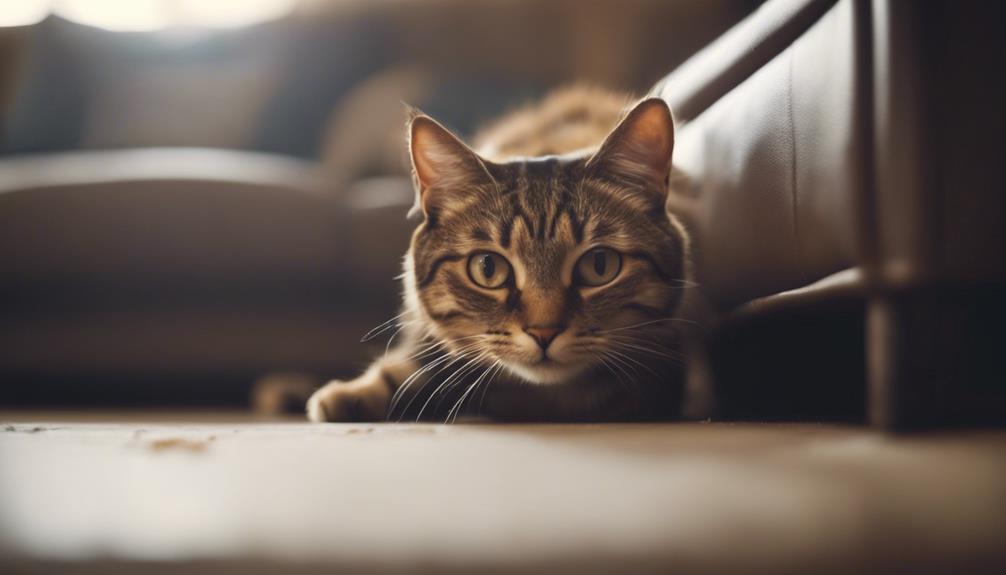
Gaining the trust of shy cats requires patience and consistency in your interactions with them. Shy cats may have had negative experiences or lack socialization, making them fearful. To help these cats feel more secure, gentle handling and a calm demeanor are crucial. Building trust takes time, but with the right approach, even the shyest cats can become more comfortable.
| Strategies for Building Trust With Shy Cats | Benefits |
|---|---|
| Approach slowly and quietly | Helps reduce stress and fear in shy cats |
| Provide hiding spots | Gives shy cats a safe space to retreat to |
| Use treats to encourage positive behavior | Creates positive associations with interactions |
| Respect their boundaries | Allows shy cats to feel in control of their environment |
| Spend quiet, quality time together | Helps shy cats become accustomed to your presence |
Engaging Playful and Energetic Cats
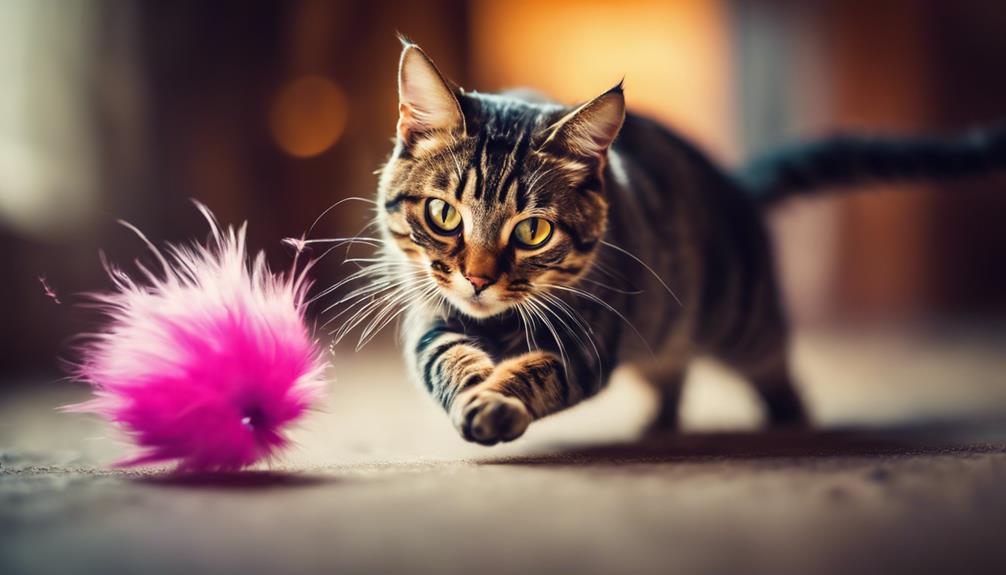
Engaging playful and energetic cats involves providing stimulating activities that cater to their high energy levels and playful nature. Interactive play and enrichment activities are essential to keep these lively felines mentally and physically engaged. Creating a stimulating environment is key to preventing boredom and ensuring the well-being of these cats.
To engage playful and energetic cats effectively, consider investing in interactive toys such as feather wands, laser pointers, or puzzle feeders. These toys not only provide mental stimulation but also encourage physical activity, helping to burn off excess energy. Rotating toys regularly can prevent boredom and maintain the cat's interest in playtime.
In addition to toys, setting up climbing structures, scratching posts, and window perches can offer opportunities for exploration and exercise. Cats enjoy vertical spaces, so providing elevated areas for them to climb and perch can satisfy their natural instincts.
Managing Aggressive Cat Behaviors
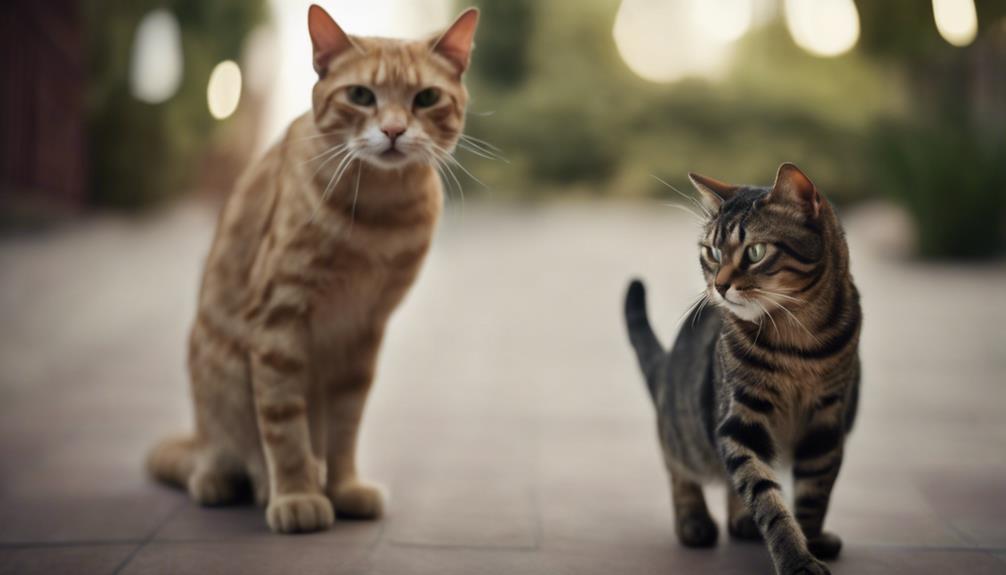
Aggressive cat behaviors can be managed through the identification of triggers and the redirection of that aggression towards more appropriate outlets. Understanding what sets off aggressive behavior in cats is crucial to effectively addressing and redirecting it.
Aggression Triggers Identification
Identifying triggers for aggression in cats is essential for effectively managing their behavior. Cats can display aggression due to various reasons such as fear, territoriality, medical issues, or play that escalates.
To identify triggers, observe the cat's body language, vocalizations, and the context in which the aggression occurs. Common triggers include sudden movements, loud noises, unfamiliar scents, or interactions with other pets. Keeping a journal to track aggressive episodes can help pinpoint specific triggers.
Once triggers are identified, steps can be taken to minimize or eliminate them, reducing the likelihood of aggressive behavior. Understanding what sets off aggression in a cat is the first step towards creating a harmonious environment and promoting positive socialization.
Redirecting Aggressive Behavior
To effectively manage aggressive cat behaviors, redirecting techniques can be implemented to modify their conduct positively.
Redirecting aggression involves guiding the cat's behavior towards more acceptable actions. Behavior modification techniques like positive reinforcement can be effective in redirecting aggressive behavior.
For instance, when a cat displays aggressive tendencies, redirect their focus by engaging them in interactive play or providing a treat when they exhibit calm behavior. It's crucial to identify triggers that lead to aggression and redirect the cat's attention away from those stimuli.
Consistency is key in behavior modification, so ensure that redirecting techniques are applied consistently to reinforce positive behaviors. By redirecting aggression through appropriate techniques, cat owners can help their pets learn more acceptable ways to express themselves.
Nurturing Independent Cat Personalities
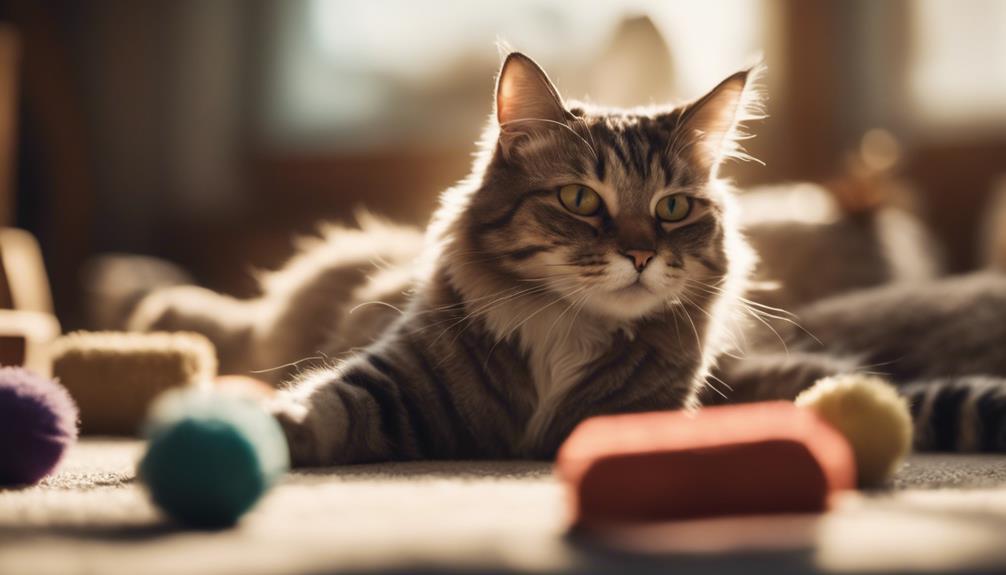
Independently-minded cats often thrive when given opportunities to explore and engage with their environment at their own pace. Encouraging independence in cats involves providing them with a safe and enriched environment where they can make choices and decisions independently. To nurture independent cat personalities, it's essential to create spaces for them to climb, hide, and investigate, allowing them to exercise their natural behaviors freely.
When socializing effectively with independent cats, it's crucial to respect their boundaries and not force interactions. Instead, provide them with interactive toys, puzzle feeders, and scratching posts to keep them mentally stimulated and physically active. Personalities and socialization strategies vary among cats, with independent cats typically preferring solitary activities over constant attention. By understanding and respecting their independence, cat owners can build a strong bond based on mutual trust and respect.
Fostering Bonding in Social Cats
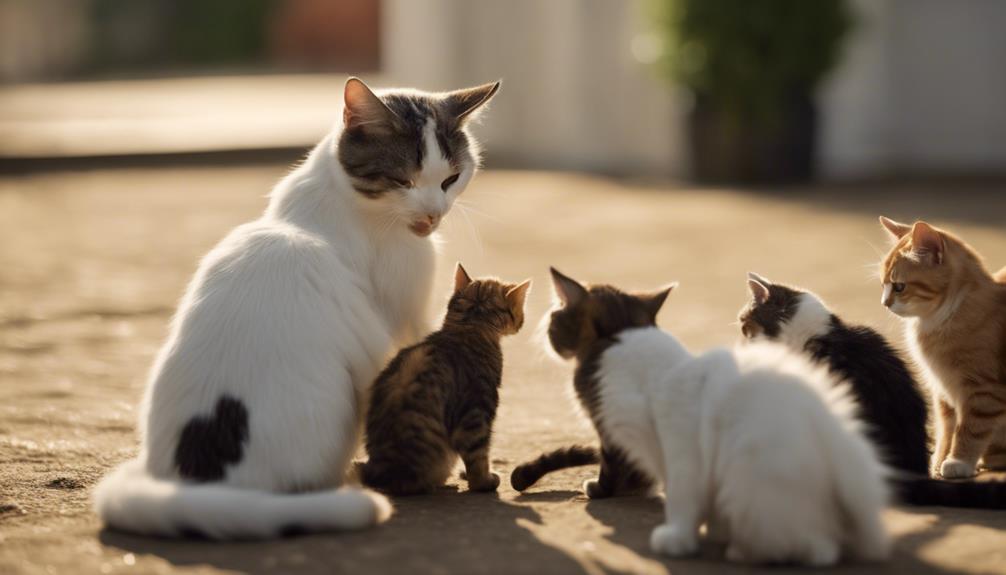
When fostering bonding in social cats, creating a nurturing and interactive environment is key to strengthening their social connections and building trust with their human companions. Social cats thrive on engaging activities that allow them to interact with their owners and other pets. Providing opportunities for play, such as interactive toys or puzzle feeders, can help foster a strong bond between a social cat and their human. Additionally, engaging in activities like grooming or gentle petting sessions can further enhance the sense of trust and connection between the cat and their owner.
Creating a routine that includes dedicated bonding time can also be beneficial for social cats. This routine can involve regular play sessions, training exercises, or simply spending quality time together in a calm and relaxed environment. Consistency in interactions and positive reinforcement of desired behaviors can help solidify the bond between a social cat and their human companion. By prioritizing activities that promote trust and connection, owners can strengthen the bond with their social feline companions and enhance their overall well-being.
Frequently Asked Questions
Can You Socialize a Senior Cat Who Has Never Been Exposed to Other Animals or People?
When considering socializing a senior cat unfamiliar with other animals or people, building trust through gradual exposure and positive reinforcement is key. Patience and understanding the cat's personality are crucial in adapting socialization techniques effectively.
How Do You Handle Socializing a Cat Who Has Experienced Trauma or Abuse in the Past?
When handling socialization post-trauma, focus on trauma recovery and trust building. Behavior modification through positive reinforcement is key. By creating a safe and consistent environment, gradually introducing stimuli, and patiently building trust, cats can heal and learn to trust again.
Are There Specific Socialization Techniques for Cats With Special Needs, Such as Deaf or Blind Cats?
When addressing specific needs like deaf or blind cat socialization, individuals can employ special techniques. Adaptation strategies may include using tactile or scent-based cues, keeping environments consistent, and providing extra support and patience to help these cats feel safe and secure.
What Can Be Done if a Cat Is Showing Signs of Fear or Aggression During Socialization Attempts?
When a cat displays fear or aggression during socialization, it's crucial to focus on building trust. Positive reinforcement, along with patience and consistency, can help the cat feel safe and secure. Understanding their needs is key.
How Can You Encourage Socialization Between Multiple Cats in a Household Who May Not Get Along With Each Other?
To encourage socialization between multiple cats in a household who may not get along, one can use positive reinforcement, gradual introduction, play therapy, and calming aids. These techniques help build trust and reduce tension among the felines.











